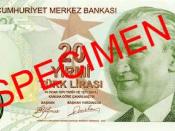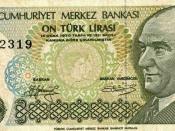A Brief History of IMF programs in Turkey and The Reasons Behind Their Ineffectiveness with The Analysis of 2001 Financial Crisis as
an Example Turkey first joined to IMF in 1947. It was shortly after in 1948 that Turkey's adventure with IMF started when for the first time, Turkey applied for a financial assistance to alleviate the consequences of 1948 economic crisis.1 Thereafter, Turkish governments chose to look for help from their friend, IMF, whenever in an economic peril. In the past more than 60 years, Turkey signed 19 stand-Ââby-Ââagreements with IMF with a total worth of $50 billion. Turkey has paid out all of his standing debt to IMF in May 2013 and thus ending its debtor role in the relationship.2 Turkey had been one of most troublesome clients of the IMF. Right after its first borrowing, Turkey quickly requested another loan in 1953 and became one of the first three countries to use the IMF waiver that allows the Fund to permit a member to draw more than the allowed amount that it can draw within a twelve-Ââmonth period.3 In 1955, Turkey became the only member country exceeding its quota. After exceeding its limits, Turkey agreed on its first standby agreement, instead of gold tranche, in 1961. This change in the loan types started a new era because for standby agreements, IMF request that the member intends to implement a sound program aimed at establishing or maintaining a realistic exchange rate. This IMF obligation put pressure on Turkey's officials to follow closely the provisions of the agreements. This situation, on the other hand, was seen by the public as a loss of Turkish economic and political autonomy and deteriorated IMF's image significantly in the following years. Until the beginning of the millennium, Turkey made numerous standby agreements with...


